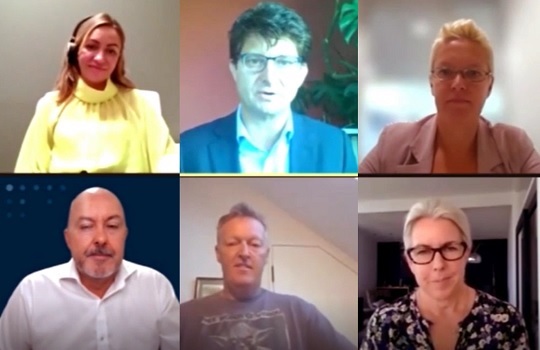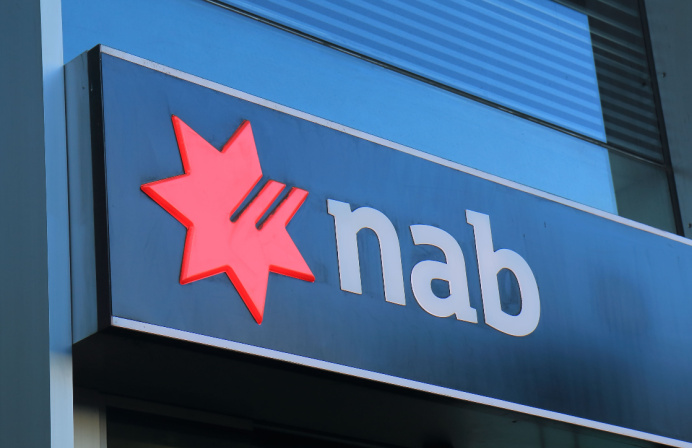
New Zealand can count itself among the fortunate few nations to have escaped the worst of 2020’s Covid lockdowns. However, the pandemic has still had an immense impact on both business confidence and consumer habits, with financial services firms forced to embark on an aggressive digital pivot – often without optimal tools or skillsets – to support business continuity and ensure lockdown-bound customers and employees continue to be properly served.
Tech and innovation chiefs from our recent Future of Financial Services, Auckland virtual conference, featured as part of the event’s IT Leaders Panel, tracked some of the key challenges their businesses faced over a turbulent 2020, particularly in overcoming legacy, emerging technologies and partnerships shaping NZ’s financial services industry, and tech focus points for the year ahead. We’ve taken a snapshot of the discussion.
Featured speakers on the panel:
- Anna Tarasoff, Head of Platforms & Innovation, Southern Cross Health Society
- Julian Downs, Chief Technology Officer – Optimise Engineering, Westpac NZ
- Paul Franks, Director, Financial Services, SAS
- Rebecca Lee, General Manager, Enablement, BNZ
- Stephanie Creasy, General Manager Delivery – Retail & Wealth, ANZ NZ
Moderated by Liam Dann, Business Editor-at-Large, NZ Herald
Liam Dann (Moderator): With the understanding that we’ve just been through something pretty radical over 2020 which has led to the acceleration of digital adoption, what other technology areas are taking priority for your organisations this year?
Anna Tarasoff (Southern Cross): For us, like for everybody else, our primary focus had been to – as you alluded to – pivot quite quickly. So how do we improve our pivoting abilities to improve our speed of delivery in general? How do we embrace change and, in terms of technology, be better with change management going forward?
Our priorities moving forward, as for probably everybody else in the financial sector but specifically in insurance, are three-fold. Firstly, AI, specifically the use of smart AI to provide a better service to our customers, and also to own better models within the industry; deep learning is also becoming more and more mainstream as part of machine learning. Secondly, cybersecurity, which has increased in significance for all of us. And thirdly, intelligent automation – so how do we streamline our back-office processes to reduce the cost or improve our footprint of applications?
Rebecca Lee (BNZ): At BNZ, our focus continues to be on enabling customers, and our cloud migration strategy is a key part of that. We partnered with Azure, and we’ll be migrating a number of our core applications into the cloud over the next few years.
One of our core customer focuses within our overall cloud strategy is our partnership with Amazon Connect for our contact centre. This will deliver core benefits for our customers, like reducing wait times, improving our accuracy, matching our customers and giving them the right service every time.
A couple of weeks ago, we launched our brand voice through ‘Āwhina’ to turn text into speech (including te reo Māori), so when our customers interact with us, we can help them with key banking inquiries, such as opening an account, obtaining a balance and so on.
Our cloud migration strategy is so key to bringing that to life in a realistic way. And, as Anna mentioned, it’s that speed of improving our transactions and speed to support our customers that’s really key for us.
Stephanie Creasy (ANZ): Some very similar things happening on our side. We start right back with what we feel that our customers need – to your point, Rebecca. We’re really looking at digitising our self-service journeys. We’re also quite focused on developing more of a personalised digital relationship, as customers move into those channels.
We’re quite focused on that mobile and that conversational space, which is underpinned, obviously, with AI and data fairly heavily to enable those experiences. A lot of work is happening in the automation and operations space, because as we scale, we need to ensure that costs stay at a particular point. Keeping customers and their data safe – there’s quite a big focus there. We’re all faced with quite big regulatory programs, so we’ve got lots of key enablers that sit underneath that. But to reference back to you, Rebecca:
A big shift is happening into the cloud space, and particularly for us to scale and move a little bit faster, we’re looking at how we can partner with some software-as-a-service offerings to be able to augment the work that we’re doing as a core.
Julian Downs (Westpac NZ): I see some similar themes between all three of us. I frame it in three ways. One, I see the 24/7 nature of things; we’re all moving to the cloud to enable that pace – that 24/7 capability. If the last year has taught us anything, behaviours and incidents can happen in different ways. So, that 24/7, that resiliency, and the behaviours we’re seeing from our customers when they transact payments and whatnot, are different to what they were two years ago. How do we handle all those?
That whole 24/7 nature is to me is going to drive us.
Also a priority is data, and the use of data, how we’re doing it – whether we talk about AI, Open Banking, or the Consumer Data Right. And, as Anna mentioned, the cyber side of things. That security, engineering, those cyber practices need to be fundamentally built across everything that we do. That’s also going to drive a lot of what we’re doing.
Paul Franks (SAS): The real theme for me, or two themes, that come out of this year – and not just in the context of Covid, is operational resilience and sustainability. We’ve spoken about artificial intelligence and machine learning. They’re really wrapped around two themes for me. One is automation, which Anna raised. But the other part of that is, how do we make more effective and efficient real-time decisions? There’s still, arguably, a bit of friction there in customer experience. How do we take that out?
The other core theme I’d add is fulfilment; it’s somewhat analogous. We’ve still got a situation where you get self-service fulfilment, but you’ve got some lag on the back-end with the delivery. So, getting that ‘supply chain’ – to use such poor words – is probably still a challenge for many. I’ve also heard a lot about cloud.
The brutal and horrible truth is that cloud is a deployment option. The same issues that apply to any form of deployment still apply to cloud. And you’ve really got to look at scalability.
Liam Dann (Mod): AI’s been touched on a little, but let’s dig a little deeper into it. The whole idea of AI – assuming we have customers who are ready for it, assuming that we know that it’s going to make business more efficient and be valuable for the bottom line – what are the challenges of getting it into place quicker over the next year or so?
Anna Tarasoff (Southern Cross): I see it as, in fact, a twofold challenge. One of them is finding people with the right skillset. That’s something which we’re probably all struggling with within New Zealand. Our second challenge is to select the right technologies, which again will be future-focused but, at the same time, established well enough to be able to use them. That’s a fine balance to find.
The aim for us as well from a customer-facing perspective is to make AI unobtrusive. People don’t need to know that something is happening with AI unless they’re interested, unless we need to demonstrate it either from a safety perspective, a comfort perspective, or from a regulatory perspective.
So we should try to make AI unobtrusive.
Stephanie Creasy (ANZ): There’s a bit of mindset maturity needed in AI, because there’s often this perception that it’s going to be magic out of the box. And we all know that it’s much harder than that. It’s a real journey in bringing stakeholders and customers along for the ride as we mature the data that we can access, the software, and the various components of the technology.
Rebecca Lee (BNZ): That’s a really good point, Stephanie. For me, and I’m a bit of a geek around data.
I really think that it’s some of the unsexy stuff that really has to be amped up and done as part of that storytelling.
The shiny vision, the silver bullets that will cure all is what gets people excited. But, you’re right, Anna, it’s having the right people and the right data quality, which is really hard. It’s not sexy, but it’s really essential to success in this space.
Anna Tarasoff (Southern Cross): I would absolutely agree. Data quality is important and it’s absolutely not sexy. It’s hard work.
Liam Dann (Mod): Anna, a question specifically for you. How do you deal with data drift in an AI model?
Anna Tarasoff (Southern Cross): Obviously, it’s a challenge. We need to consider testing, constant testing, and that we check the models. And we have a framework to ensure our models are still correct and robust. I like what Julian mentioned with the “engineering mindset”. It’s really important in a data space as well, because, initially, when data science came along, it was really ad hoc. Today, in terms of automation, we have to ask, how do we get our models constantly improved, constantly tested and to the right standards and right levels? We’re aiming to be there, but we’re probably not there as yet. There’s still quite a lot of manual effort that goes into this.
Paul Franks (SAS): You’re seeing a transition to data pipelining, which is probably a big part of that. So, how do you build pipelines? You’re really putting veracity around datasets before they enter the model and promoting those. Then, when the models are up – Anna makes a couple of great points there – you’re seeing the emergence of a lot more ‘autotuning’. There used to be A/B testing, you might call it.
How do we autotune those and how do we apply a broader range of analytical techniques to get them fit for purpose is probably the big shift were seeing around models for AI or ML.
Liam Dann (Mod): A question from the audience. It’s fair to say there’s been a general shift to platform-as-a-service solutions versus building in-house custom applications. What does that mean for employee skills that you’re looking to hire or develop?
Stephanie Creasy (ANZ): We have to deploy both strategies. We’re going to need to retain some sort of IP within the core of our ecosystems and also that customer experience that we’re wanting to deliver. But, at the same time, there are phenomenal offerings out there to augment it and scale differently.
Obviously, there’s integration in the API space, but also people who are skilled at working with partners really effectively, getting really good outcomes, and also that ability to bring lots of different teams from potentially three, four, or even five different partners together to collaborate and deliver the experiences that we’re seeking for customers.
Paul Franks (SAS): I’d say that’s right, Stephanie. From the vendor side, platform-as-a-service, software-as-a-service, and probably the concept of ‘hybrids’ are important, because hybrids will happen as we transition between those legacy on-prem solutions to those SaaS offerings.
There’s a big push around capability, particularly capability frameworks, and how that fits into an operating model. A lot of operating models are being reconsidered and replanned. But, as mentioned by our panellists earlier, that resilience, sustainability and, for me, that interoperability is key. You’ve got lots of different components there, whether they’re vendor offerings or in-house, they’ve got to interoperate and have that 24/7 capability.
Julian Downs (Westpac NZ): It’s really codification – we’re starting to codify everything we do… to get to my ’24/7′. For that resilience, if something happens, I can then stand that system up from the ground-up and codify; none of this manual hand-over business.
It’s those 24/7 engineering practices that we want right across the board. Not just at my front-end website or application, but right across my legacy systems as well.
When you think about building those engineering capabilities, how do we implement and get the right training? You’re still going to need all those skills as you come into more of a platform space.
When we think about financial services and some of the partners we’re working with, how do we actually influence and share some of those skills? If we’re buying a package solution, how can we ensure all of that coaching and those good practices from engineering are built into it? There is still a learning challenge that we all have to go through.
Paul Franks (SAS): I love that word codification, Julian. I’d add ‘standardisation’ as the usual wrap-around, and ‘simplification’ if we can, particularly in looking for opportunities to streamline processes, as you mentioned.
Liam Dann (Mod): Looking a bit more left field, what role do you expect blockchain to play in banking over the next five to 10 years? While, as the questioner notes, we’re traditionally ahead of the curve on a lot of digital finance in New Zealand, we’re perhaps not so much with blockchain.
Paul Franks (SAS): I’m on neutral ground, so I’ll fire off. Blockchain has great promise. Despite the hype, there are still security issues that are being found.
The idea of having this concept of both the payment vehicle and the documentation vehicle integrated offers great promise.
But I want to see a little more rigour around some of the technology, particularly where you’re passing between different systems, because blockchain is a technology that still needs to pass between different operatives. I still think there’s a way to go.
And the other part for me, my team has expressed some reservations and concerns around cybersecurity. And, regrettably, we have seen some instances with it. I’d probably want to see more wrapping around that. Of course, I don’t profess to be a cybersecurity expert, but that’d be my observations. But down to that identity authentication level, it’s pretty promising, but perhaps still not quite there; there’s room for improvement.
Liam Dann (Mod): A sense then, from a practical point of view, we don’t need to be ahead of the curve on blockchain?
Paul Franks (SAS): With the curve would probably be my suggestion. Personally, I think there are some more immediate payments technology improvements that New Zealand and Australia could do before blockchain.
Liam Dann (Mod): It’s been touched on a few times, but the notion of partnerships and collaboration with the fintech and banking sector. With all the change that’s happening, have these partnerships become increasingly necessary? Is that a trend we’re going to see more of?
Anna Tarasoff (Southern Cross): For us, it’s very important. For an insurance provider and as a company that wants to focus on the wellbeing of people, it’s critical to be a part of an ecosystem – both a healthcare ecosystem and financial services ecosystem. And that’s where our focus needs to be. And it is at the moment, how do we better play a part on our side in the ecosystem and how do we use our ecosystem better as well for providing health advice and insurance advice, and making products more relevant?
We understand now that we cannot be just by ourselves, we will need to be a part of a bigger ecosystem.
Liam Dann (Mod): Open Banking has been looming for us for a couple of years. What do you see as the big regulatory challenges for you in the year ahead?
Julian Downs (Westpac NZ): We’ve obviously got the Consumer Data Right and all the data side of things associated with that. We’re all still working through the BS11 side of things as well. These will both take a lot of the focus this year.
Paul Franks (SAS): BS11 is still pretty real.
Looking from the other side of the fence, I see BS11 playing out and I’m not convinced that we’re all there yet.
Some of the responses to it have been interesting.
Another that’s emerging is in customer remediation – and we’ve got RG 271 that comes out in October in Australia. My expectation is you’ll see that permeate on both sides of the Tasman. RG 271 is around internal dispute resolution, or ‘customer complaints’ if you want to give it its poor name. But how do we become more responsive? As an industry, we’ve all been participants in getting that to a better place. Moreover, data will never go away. It’s inevitable. It’ll deepen rights and there’s probably going to be an ethical dimension that will play out over the next 12 to 24 months.
Stephanie Creasy (ANZ): I’d probably just add the CCCFA in particular for 2021.
But, more generally, we have to ask, what’s the cost of compliance that we’re facing, not just this year but ongoing? And how do you design that into your solution so that we’re not running backwards trying to run reports and so on?
There’s some interesting stuff going on globally in that regtech space.
When you look at financial services businesses that are able to start from scratch because they’re in a greenfields context, they’re thinking about regulation in the same way we think about test automation –it’s baked in, it’s built-in, they know it needs to be sustainable, it needs to be automated, it needs to be cost-effective. These are some of the big challenges for us to all resolve.
Rebecca Lee (BNZ): Just linking that back to talent that we discussed earlier. There’s a real opportunity to think about how we can get compliance experts and our technology experts to be working a lot more closely together.
That takes a change in the language around regulation from more of a regulatory challenge to a regulatory opportunity. That, ultimately, impacts how we’re designing our environments.
Liam Dann (Mod): A lot of the push for more regulation from regulators and also politicians comes from the public’s degree of trust in the system. So how do we ensure we’re taking the public along with us – particularly as data mounts exponentially?
Stephanie Creasy (ANZ): When you reference the journey in Open Banking that’s happening in the UK or more further afield, that journey for an education, that buy-in, and trust is super important as they start to scale from a little bit of open data through to Open Banking and then through to Open Finance.
The bigger ecosystem gets, the more we’ll have to ensure that we’re holding that trust up through good governance and an ability to track where customers’ data is, giving them control and oversight. That’s a wicked challenge to face into.
Julian Downs (Westpac NZ): It’s not an easy challenge. And it’s been going on for a while in the UK. If it were an easy challenge, we’d have solved it – that transparency, that building trust over time as you deal with all that data.
We’ve all built systems over time and captured data for specific purposes. We’ve got to be custodians of that. We have to ask, ‘How do I look after that? Did I need to collect all of that data for that purpose?’ That trust builds over time with transparency.
Paul Franks (SAS): Just on the constancy of consent.
Consent, in the past, has always been a one-off. The reality, now, is that it’s going to be a constant rather than temporal.
We’re not necessary in this neck of the woods yet. That ethical layering over top is going to be a challenge, and I’d probably like to see something in the middle.
By and large, and broadly speaking, I think it’s done very well. Trust is pretty high if you look at the stats. The ABA’s [Australian Banking Association] done it here in Australia. The UK’s done a similar version.
Some of the protections in place, so to speak, especially considering the recent health issues, you could say we’ve struck a good balance. My words would be to encourage the journey with the banks; personalisation will really play out from that.
Liam Dann (Mod): Some last thoughts on your outlook for 2021 and beyond. Do you think we’ve come through this period well and are in good shape for the year ahead?
Stephanie Creasy (ANZ): Yes! I’m in a very optimistic state.
At the end of 2020, we were all feeling pretty fatigued. But it’s led to an enormous sense of ambition, a desire to continue to really meet our customers where they are and really push ourselves here in NZ.
I do think that we’re always somewhat at risk of falling behind in NZ when you look at what’s happening in global markets. So, my hope is that, collectively, we’re really pushing ourselves forward.
Paul Franks (SAS): I’m encouraged. I get the opportunity to work with most of the people on this call in some capacity and I see some good things happening.
I like the words ‘ambition’ and ‘capability’ in equal measure. And the industry is really looking for ways to become more capable through their people, through the process, and through their tech; there’s some really good messaging there. And, as I’ve said many times in this session, let’s keep it going!
This is an edited extract from the IT Leaders’ Panel featured at FST’s Future of Financial Services, Auckland 2021 event.





